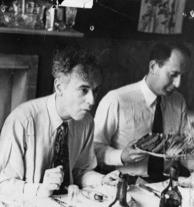A central problem with quantum field theory in its early days was the persistent appearance of divergences in the calculations of important physical quantities. Renormalization techniques developed in the 1940s ostensibly solved this problem and rendered quantum electrodynamics a powerful predictive framework. Renormalization techniques continued to evolve, both formally and conceptually, after this initial success however. Starting in the 1950s, and culminating in the 1970s, a framework known as the renormalization group emerged that fostered a new interpretive and methodological stance in high energy physics. In the wake of the renormalization group physicists have increasingly viewed quantum field theories as "effective field theories," valid only in certain energy regimes. This project aims to trace the historical development of renormalization theory in the second half of the 20th century and explore its impact on physicists' aspirations and methodologies for formulating a final theory.

Murray Gell-Mann and Lev Landau at the Moscow Conference, 1956.
Project
(2018-)
